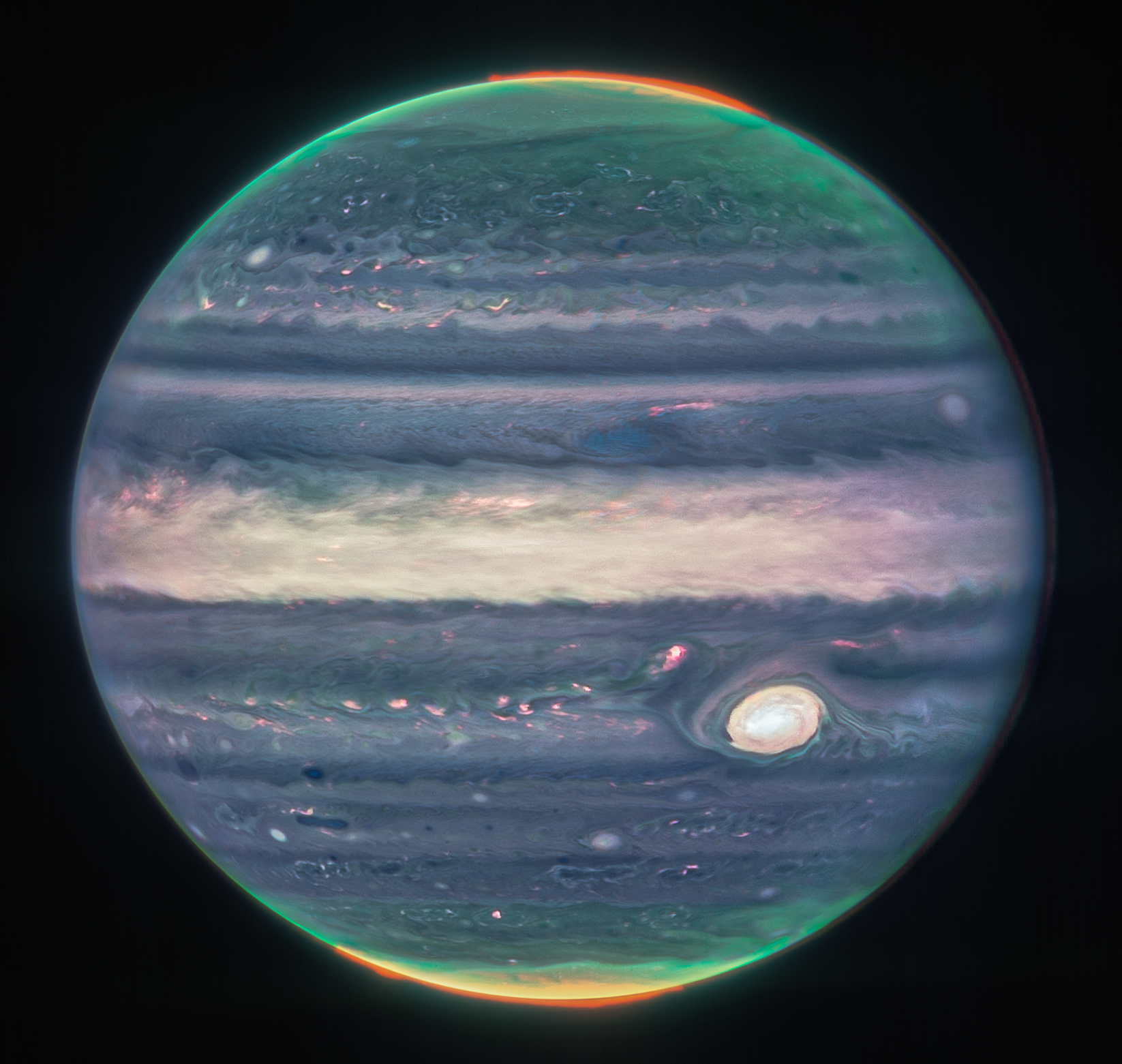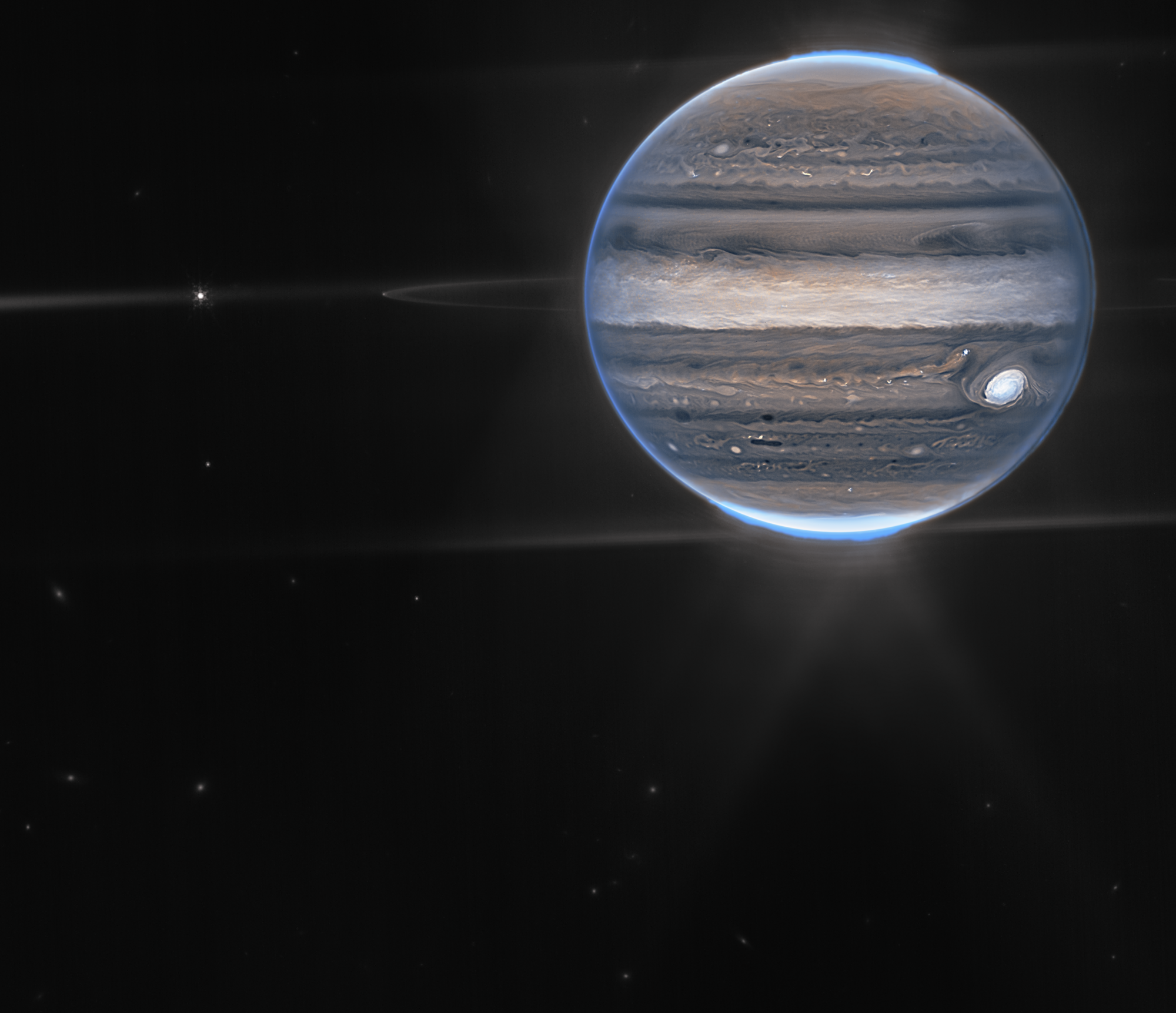News
James Webb telescope captures color photos of Jupiter: you can see polar lights and a giant storm
The James Webb Space Telescope has taken detailed photos of Jupiter. They show the northern lights at the poles, giant storms and winds.
The images were published on the NASA website on Monday, August 22. As noted, the telescope's observations will give scientists even more information about the inner life of Jupiter.
"To be honest, we didn't expect it to be this good. It's really great that we can see the details of Jupiter along with its rings, tiny satellites, and even galaxies in one image," astronomer and professor emeritus at the University of California, Berkeley, Imke de Pater said.
She led the observations of Jupiter together with Thierry Fouchet, a professor at the Paris Observatory, as part of an international collaboration under the Webb Early Release Science program.
As noted, the telescope received two images from the observatory's Near Infrared Camera (NIRCam). It has three specialized infrared filters that show the details of the planet. The infrared light was mapped to the visible range. As a rule, the longest waves appear redder and the shortest waves appear bluer.
In the first photo, you can see a large bright spot: this is a giant storm that can swallow the entire Earth.
In the second photo, besides Jupiter, you can see its satellites Amalthea and Adrastea, as well as cloud rings.
The launch of the telescope has been postponed several times since 2007. In 2022, it was planned to be launched on December 18, then the launch was postponed to December 22, and then to December 24. It finally took place on December 25: an Ariane 5 rocket with an orbiting telescope took off from the Kourou spaceport in French Guiana.
After the device separated from the spacecraft, it began studying the oldest stars and galaxies in the Universe that formed after the Big Bang, as well as searching for potentially habitable planets.
The James Webb telescope has many times greater technical capabilities than its world-famous predecessor, the Hubble.
Only verified information is available on our Telegram channel Obozrevatel and Viber. Do not fall for fakes!





























